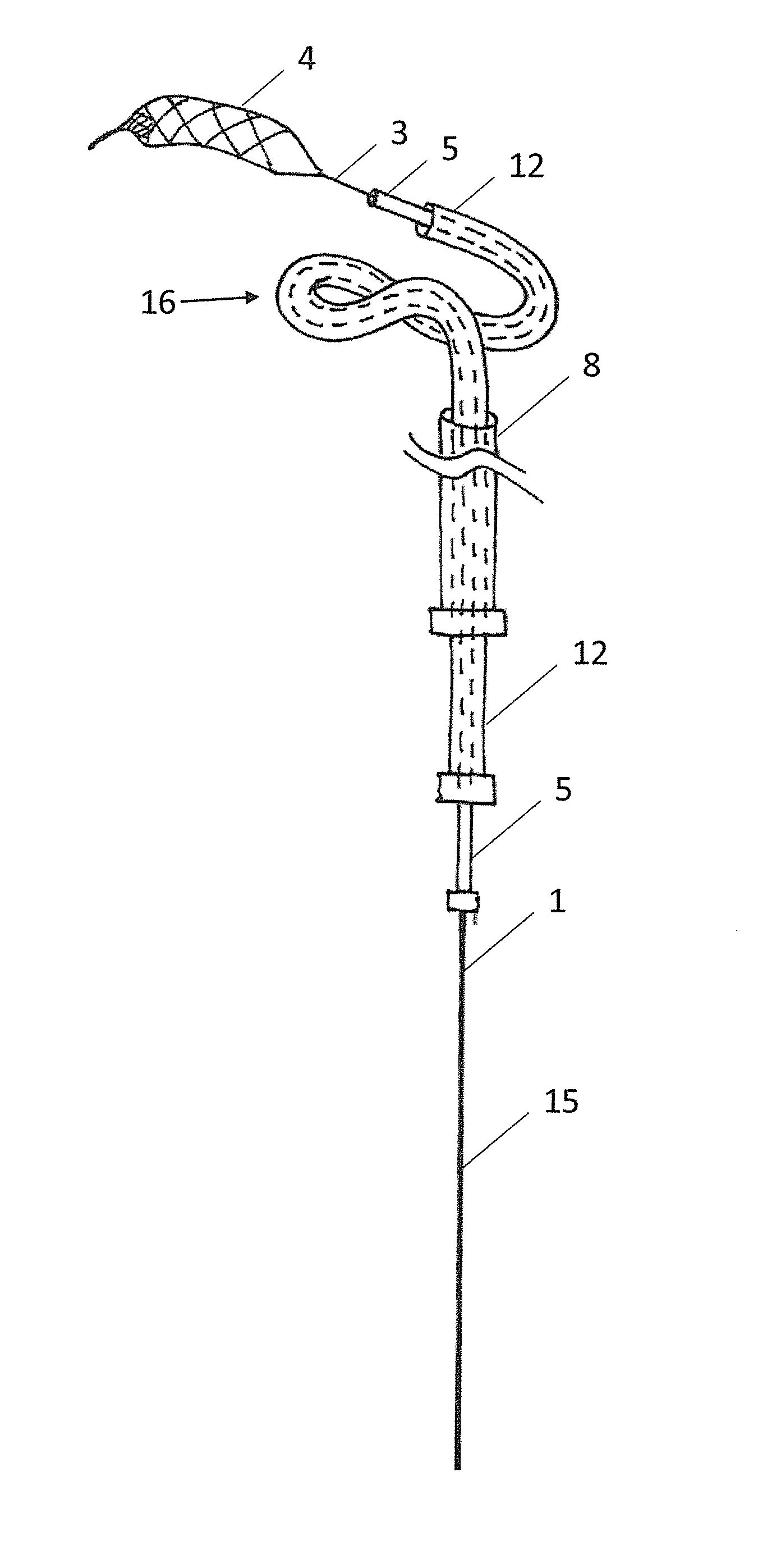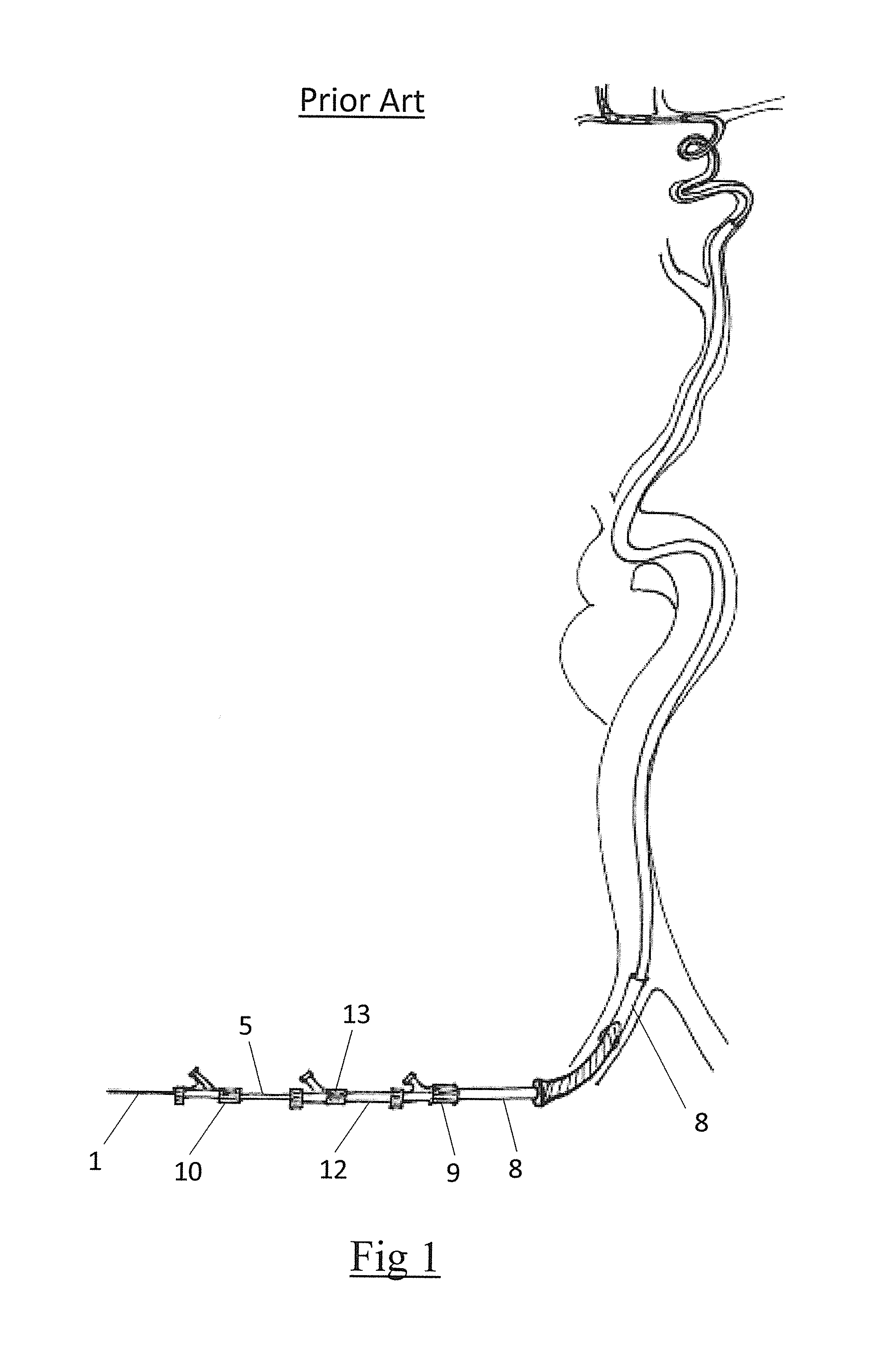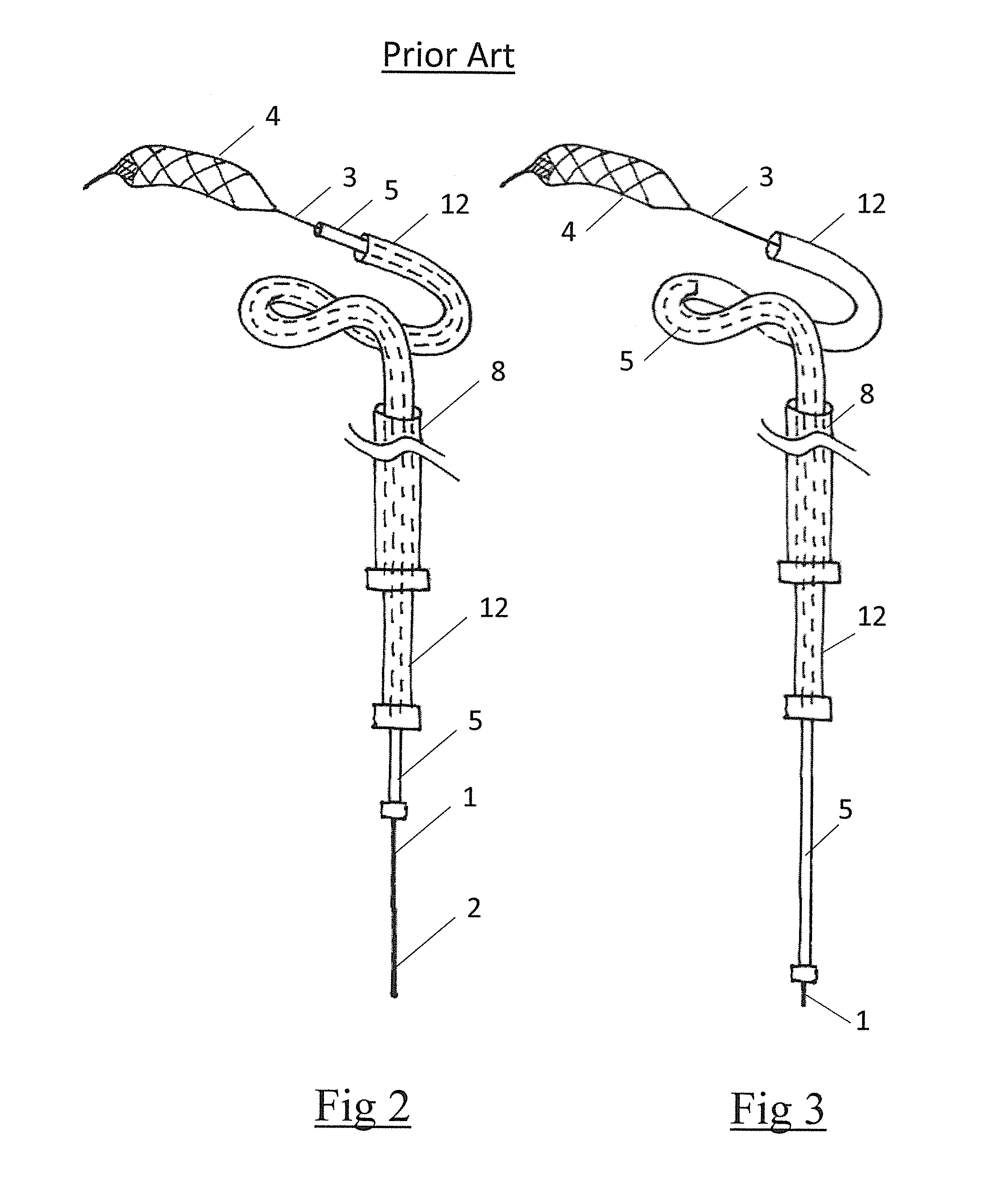Clot retrieval system for removing occlusive clot from a blood vessel
a blood vessel and clot technology, applied in the field of clot retrieval system, can solve the problems of high performance, difficult to deliver devices, and difficult to position guide catheters,
- Summary
- Abstract
- Description
- Claims
- Application Information
AI Technical Summary
Benefits of technology
Problems solved by technology
Method used
Image
Examples
Embodiment Construction
[0049]Various devices and methods for removal of acute blockages from blood vessels are known. For example, various clot retrieval devices and methods of use are described in our WO2012 / 120490A and US2013-0345739A. The entire contents of all of the above-listed applications are herein incorporated by reference.
[0050]Known devices (FIGS. 1 to 5) generally comprise an elongate shaft 1 having a proximal end 2 and a distal end 3. A clot retrieval element 4 is mounted at the distal end of the elongate shaft. The clot retrieval element 4 may have a collapsed delivery configuration and an expanded deployed configuration. A microcatheter 5 is advanced across a clot with the aid of a guidewire. Once the microcatheter distal tip has been advanced across and distal of the clot the guide wire is removed and the clot retrieval element 4 and associated elongate shaft 1 is advanced through the microcatheter 5 in the collapsed delivery configuration. When the retrieval element 4 has crossed the clo...
PUM
 Login to View More
Login to View More Abstract
Description
Claims
Application Information
 Login to View More
Login to View More - R&D
- Intellectual Property
- Life Sciences
- Materials
- Tech Scout
- Unparalleled Data Quality
- Higher Quality Content
- 60% Fewer Hallucinations
Browse by: Latest US Patents, China's latest patents, Technical Efficacy Thesaurus, Application Domain, Technology Topic, Popular Technical Reports.
© 2025 PatSnap. All rights reserved.Legal|Privacy policy|Modern Slavery Act Transparency Statement|Sitemap|About US| Contact US: help@patsnap.com



